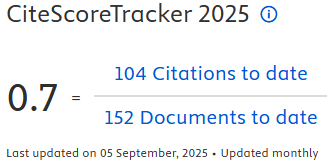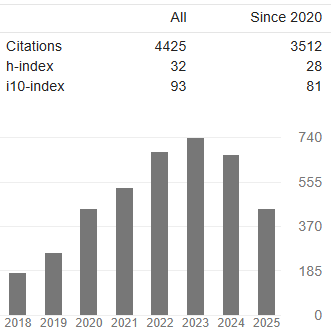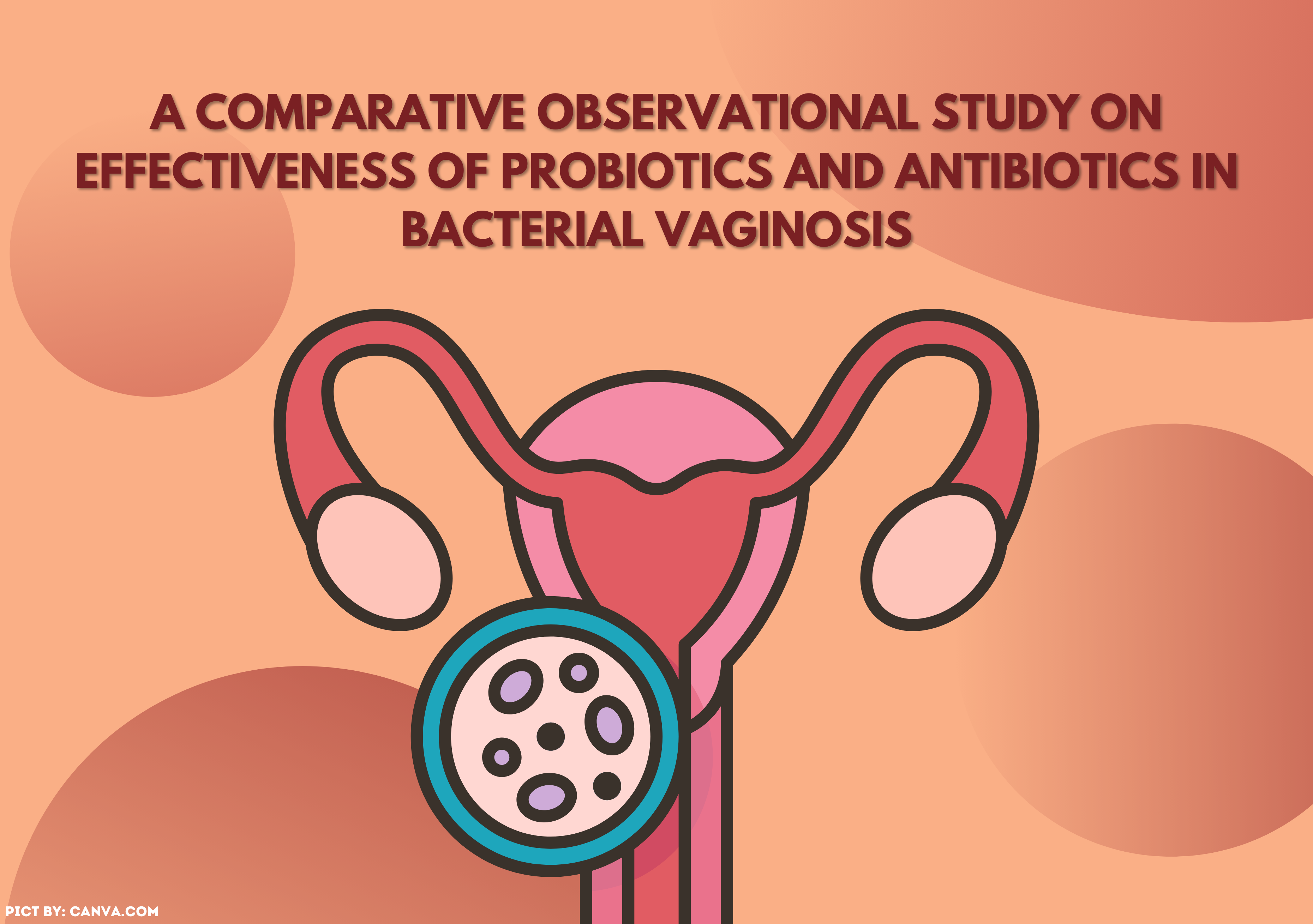THE EMPOWERMENT OF CADRES AND TRADITIONAL BIRTH ATTENDANTS IN THE EARLY DETECTION AND PREVENTION OF STUNTING IN NORTH BOGOR DISTRICT, BOGOR, WEST JAVA
Downloads
Stunting associated to the increased risk of morbidity and mortality, reduced physical capacity, impaired development and function of children's motor and mental condition. Efforts have been made by the Government through Integrated Healthcare Center (IHC), however it is less optimal as it didn't involved all aspects of the community. Cadres and TBAs are important parts of the community that are strategic enough to be involved in this activity, because they are very close to mothers and the community.This program aims to improve the knowledge and practice of 31 cadres and traditional birth attendants (TBA) in early detection and prevention of stunting and implement their knowledge to the community by using lecture, discussion, practice, and film screening methods. There is a significant difference in the knowledge level of cadres and TBA between pre and post training (p value = 0.0005) with knowledge improvement of 30.68%. Furthermore, cadre and TBA did a Follow-Up Plan (FUP) in the form of stunting socialization and education, particularly to the expectants and mothers, with the results of about 124 people exposed to stunting. To monitor FUP, team formed a total of 3 Whatsapp Groups for each village as a forum of communication and discussion between fellow participants to PHC and Research Team. As the result, almost all trainees informed the FUP through Whatsapp group, in the form of socialization and education to other cadres and mothers during IHC, recitations, village activities, sports activities, as well as family or neighbors individually, etc. Through the empowerment of cadres and TBA, education on early detection and prevention of stunting goes according to expectations and is quite effective to the role of cadres and TBA in the community.
Keywords: stunting, cadre, traditional birth attendant, empowermentAchadi, L. E. (2013) Gizi Ibu dan Kesehatan Reproduksi dalam Gizi dan Kesehatan Masyarakat. Jakarta: Rajawali Press.
Adistie, F. et al. (2018) ‘Pemberdayaan Kader Kesehatan Dalam Deteksi Dini Stunting dan Stimulasi Tumbuh Kembang pada Balita', Media Karya Kesehatan, 1(2), pp. 173–184. doi: 10.24198/mkk.v1i2.18863.
Astuti, N. R. (2013) ‘Promosi Kesehatan Gigi Dan Mulut Dengan Metode Ceramah Interaktif Dan Demonstrasi Disertai Alat Peraga Pada Guru Sekolah Dasar Sebagai Fasilitator', International Dental Journal, 2(2), pp. 16–25.
Bogor District of Public Health Office (2017) ‘Profil Kesehatan Kota Bogor Tahun 2016'.
Chairani, L. S. et al. (2018) ‘Gambaran Pemberian Asi Eksklusif terhadap Kejadian Stunting pada Balita Umur 24-60 Bulan di Kelurahan Tanah Baru Bogor Tahun 2018'.
Chang, S. et al. (2010) ‘Early Childhood Stunting and Later Fine Motor Abilities', Developmental Medicine & Child Neurology, 52(9), pp. 831–836.
Departement of Health (2009) ‘Laporan Hasil Riset Kesehatan Dasar (Riskesdas) Provinsi Jawa Barat Tahun 2007'.
Fuada, N., Muljati, S. and Hidayat, T. S. (2011) ‘Karakteristik Anak Balita dengan Status Gizi Akut dan Kronis di Perkotaan dan Pedesaan, di Indonesia (RISKESDAS 2010)', Jurnal Ekologi Kesehatan, 10(3), pp. 168–179.
Green, L. . and Kreuter, M. . (2005) Health Program Planning an Educational and Ecological Approach 4th Ed. Boston, MA: McGraw-Hill.
Iswarawanti, D. N. (2010) ‘Kader Posyandu: Peranan dan Tantangan Pemberdayaannya dalam Usaha Peningkatan Gizi Anak di Indonesia', Jurnal Manajemen Pelayanan Kesehatan, 13(04), pp. 169–173.
Ministry of Health (2013) Riset Kesehatan Dasar (RISKESDAS) Tahun 2013.
Martha, E. (no date) Laporan IPTEKS Bagi Masyarakat DRPMUI; Pencerdasan Peternak, Penjual, Pemotong Hewan Kurban Dan Kader Tentang Tatalaksana Hewan Kurban Dalam Rangka Pencegahan Penyakit Zoonotik Di Kecamatan Bojongsari, Depok Tahun 2017.
Notoatmodjo, S. (2012) Promosi Kesehatan dan Ilmu Perilaku. Jakarta: Rineka Cipta.
Nursalam (2008) Konsep dan Penerapan Metodologi Penelitian Ilmu Keperawatan, Pedoman Skripsi, Tesis dan Intrumen Penelitian Keperawatan. Jakarta: Salemba Medika.
Picauly, I. and Toy, S. M. (2013) ‘Analisis Determinan Dan Pengaruh Stunting Terhadap Prestasi Belajar Anak Sekolah Di Kupang Dan Sumba Timur, Ntt', Jurnal Gizi dan Pangan, 8(1), p. 55. doi: 10.25182/jgp.2013.8.1.55-62.
Sabaruddin, E. N. (2012) ‘Study on Positive Deviance of Stunting Problems among Under Five Children from Poor Family in Bogor City'.
Simamora, H. R. (2009) Buku Ajar Pendidikan dalam Keperawatan. Jakarta: EGC.
Soekanto, S. and Sulistyowati, B. (2015) Sosiologi: Suatu Pengantar. Jakarta: RajaGrafindo Persada.
Tse, A. D. P., Suprojo, A. and Adiwidjaja, I. (2017) ‘Peran Kader Posyandu Terhadap Pembangunan Kesehatan Masyarakat', Jurnal Ilmu Sosial dan Ilmu Politik, 6(1), pp. 60–62.
UNICEF (2013) ‘Improving Child Nutrition: The Achievable Imperative For Global Progress'.
Victora, C. G. et al. (2008) ‘Maternal and child undernutrition: consequences for adult health and human capital', The Lancet, 371(9609), pp. 340–357. doi: 10.1016/S0140-6736(07)61692-4.
Wahyurin, I. S. et al. (2019) ‘Pengaruh edukasi stunting menggunakan metode brainstorming dan audiovisual terhadap pengetahuan ibu dengan anak stunting', Ilmu Gizi Indonesia. Universitas Respati Yogyakarta, (Vol 2, No 2 (2019): Februari), pp. 141–146.
World Health Organization (2014) ‘Global Nutrition Target 2025: Stunting Policy Brief'.
World Health Organization (2015) ‘Nutrition Landscape Information System (NLiS), Help Topic: Child Malnutrition'.
- The authors agree to transfer the transfer copyright of the article to The Indonesian Journal of Public Health effective if and when the paper is accepted for publication.
- Authors and other parties are bound to the Creative Commons Attribution-NonCommercial-ShareAlike 4.0 International License for the published articles, legal formal aspect of journal publication accessibility refers to Creative Commons Attribution-NonCommercial-ShareAlike 4.0 International License (CC BY-NC-SA), implies that:
- Attribution ” You must give appropriate credit, provide a link to the license, and indicate if changes were made. You may do so in any reasonable manner, but not in any way that suggests the licensor endorses you or your use.
- NonCommercial ” You may not use the material for commercial purposes.
- ShareAlike ” If you remix, transform, or build upon the material, you must distribute your contributions under the same license as the original.































